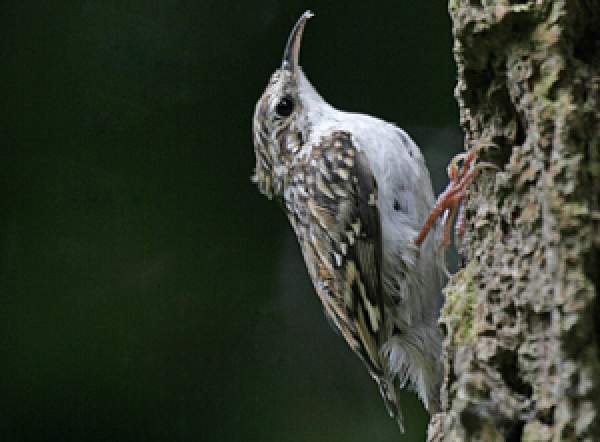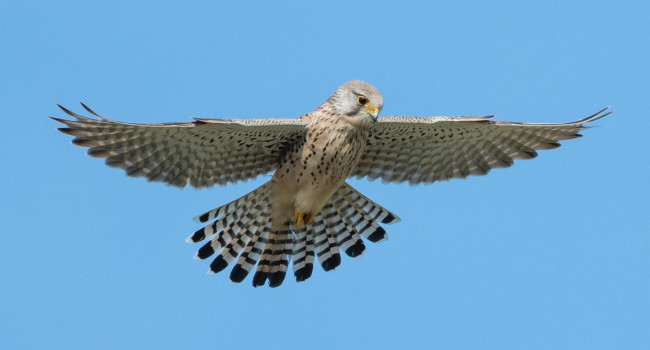Treecreeper
Certhia familiaris

Although the Treecreeper is similar in size to a Wren, it appears larger because of its longer down-curved bill and its much longer, stiff tail. Often described as being ‘mouse-like’ the Treecreeper is essentially brown above, with a long white stripe above the eye (known as the supercilium) and mottled white markings on the wings and back, and white below. The intricately patterned brown plumage is ideal camouflage for a bird working its way up a tree trunk.
In Europe, there is the Short-toed Treecreeper which is almost identical to our own Common Treecreeper. Where the two species overlap, the Common Treecreeper is generally found at higher altitudes and in coniferous woodland. In fact, the Germans call the Short-toed Treecreeper the ‘Garden Treecreeper’. Only Short-toed Treecreepers breed in the Channel Islands. Occasionally, vagrants are picked out along the south coast of England, often in October and usually by observers who have learned the distinctive song whilst birdwatching in Europe. The problem of identification means that most Short-toed Treecreepers that do venture to Britain probably go unrecorded.
Normally, Treecreepers forage up one tree, working in a spiral around the trunk, then fly to the next tree to repeat the process, starting near the bottom again. A bird seen scuttling down a tree is almost always a Nuthatch.
Tiny Treecreepers are vulnerable to cold weather of a particular sort. If wet snow or rain is followed by a hard frost, ice encases the trees. The Trecreepers’ food is sealed in and the birds are in trouble. These conditions rarely affect the sheltered interiors of woods, and so Treecreepers in good habitat may be less likely to suffer than some other small species. However, those that rely on a network of more exposed trees, perhaps those that typically visit gardens, can be vulnerable. In winter, they do need to be able to feed through all available daylight.
Nesting is generally at the same time as the tits, as the breeding adults need to take advantage of the same glut of caterpillars at the beginning of June. There are very few second broods. The nest site is generally rather constricted, often squeezed behind a hanging piece of bark. Usually a bed of tiny twigs lines the nest cavity and it generally has two openings, one used as the entrance and the other as the exit. They have a rather shorter fledging period than the tits and this may indicate that the nest sites is not as secure as the deeper cavities used by the tits.
Find out more about Treecreepers on BirdFacts and the Wider Countryside Report.






Share this page